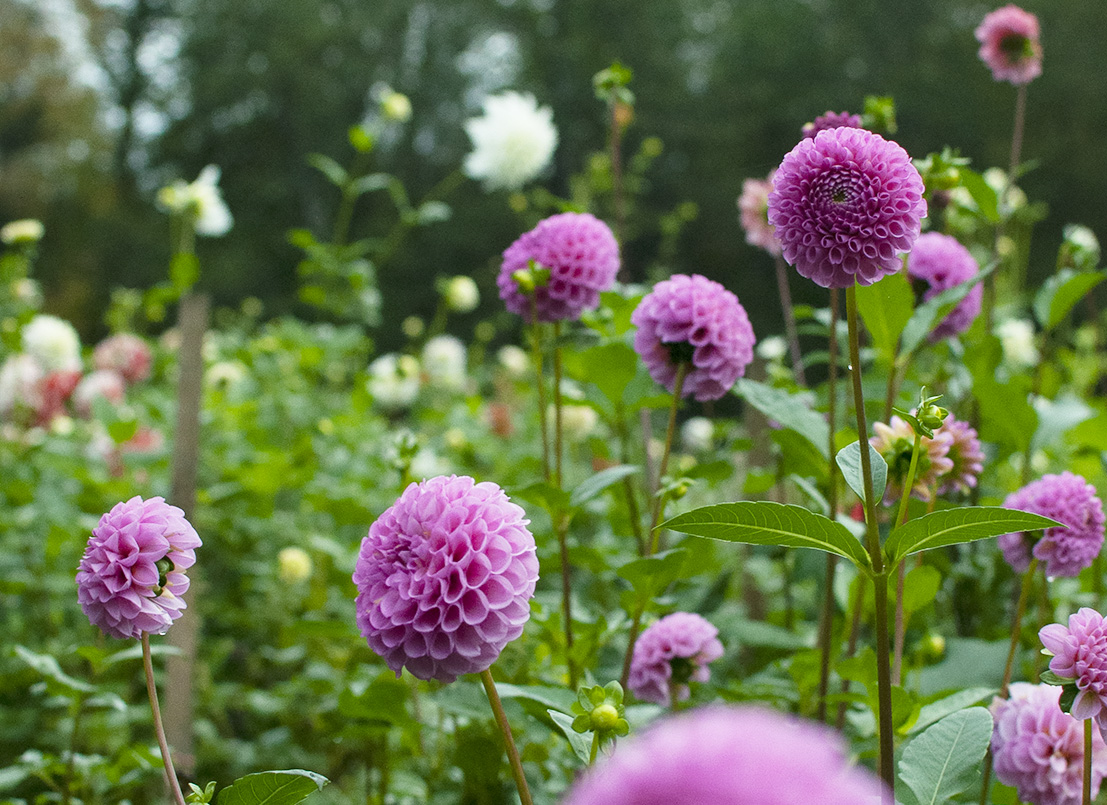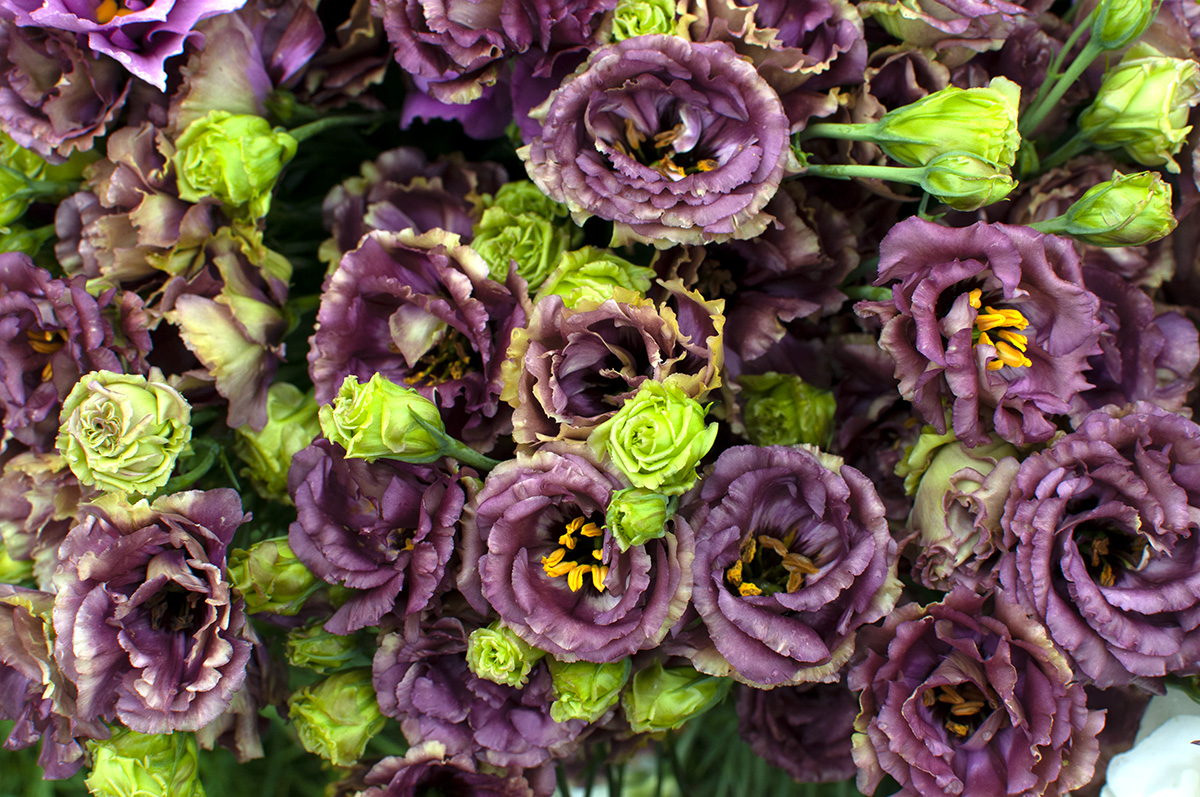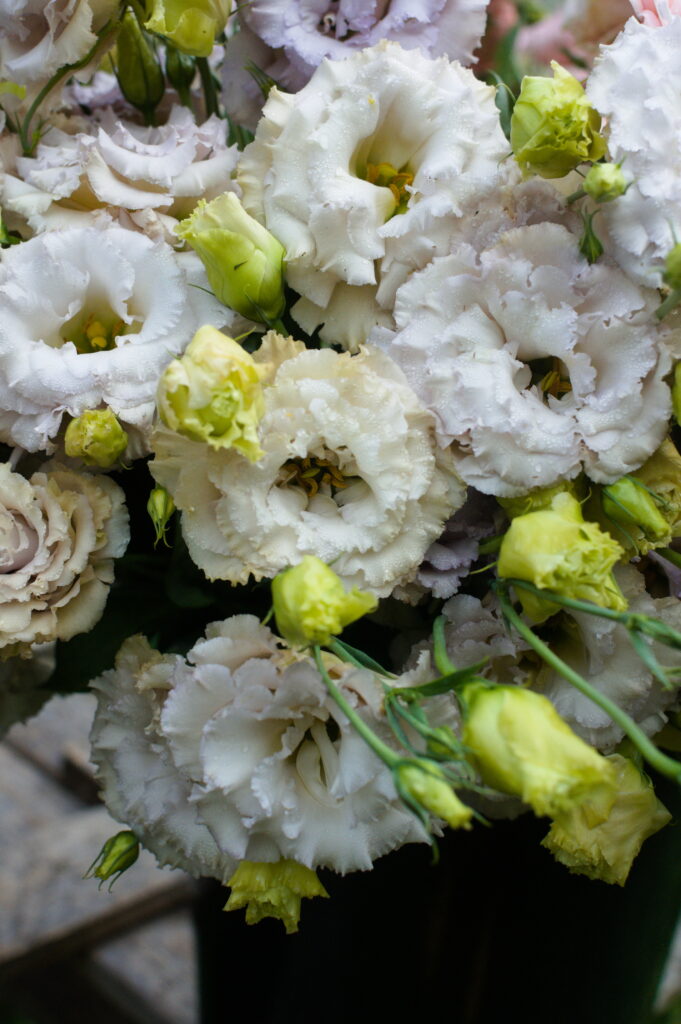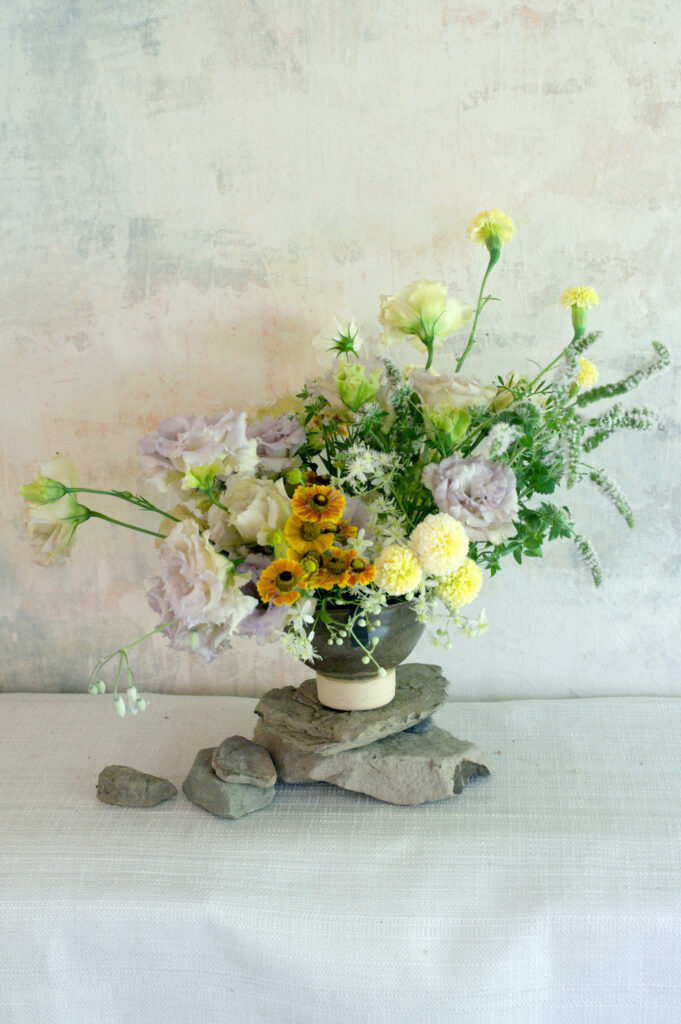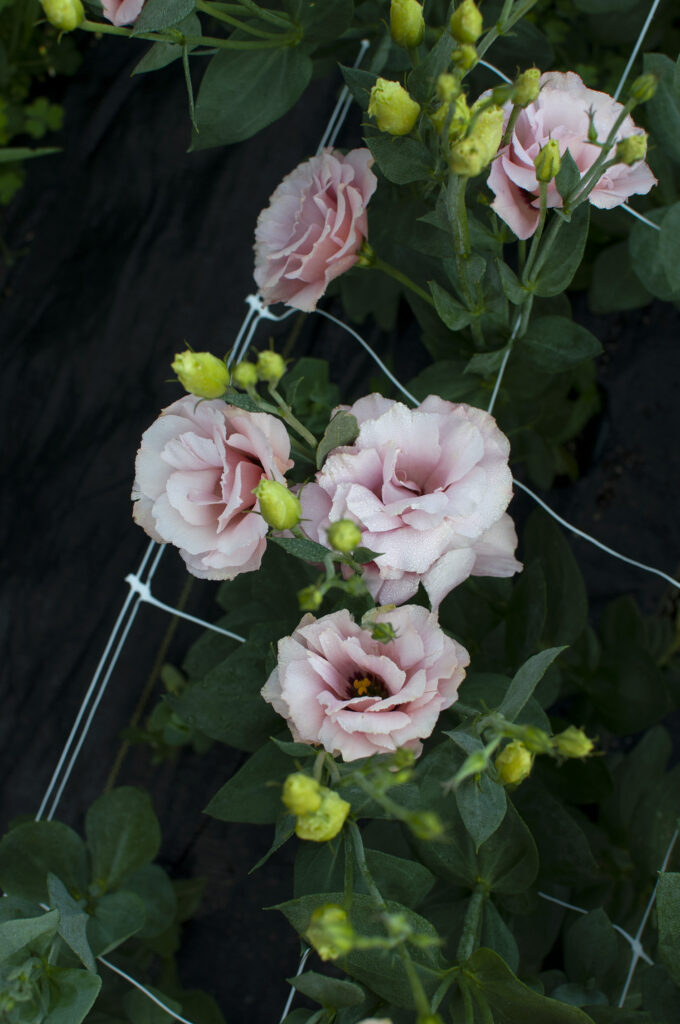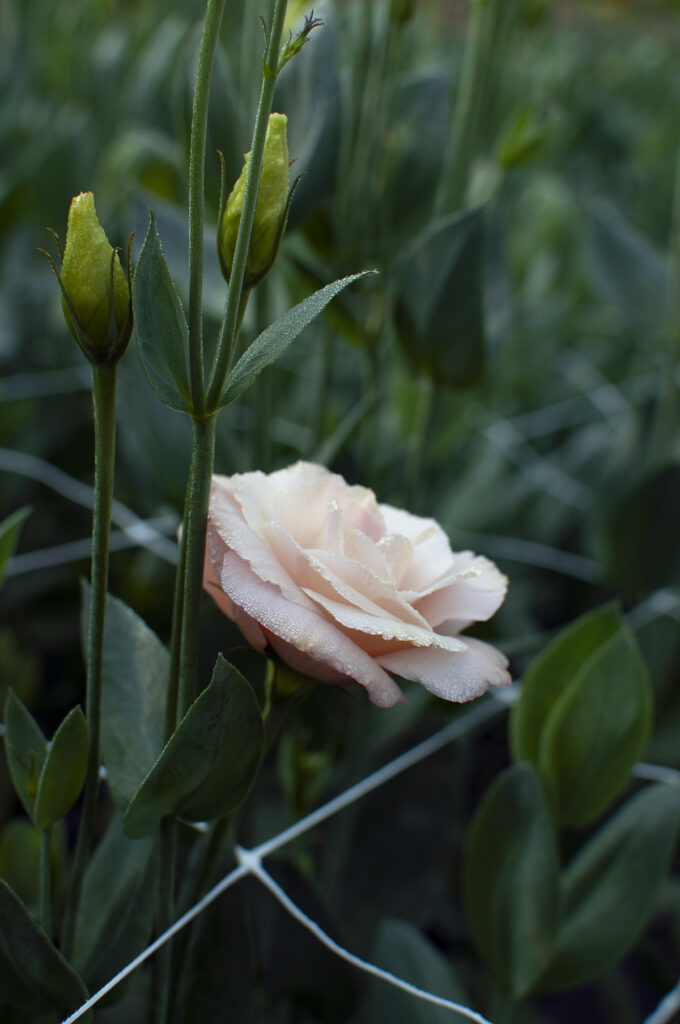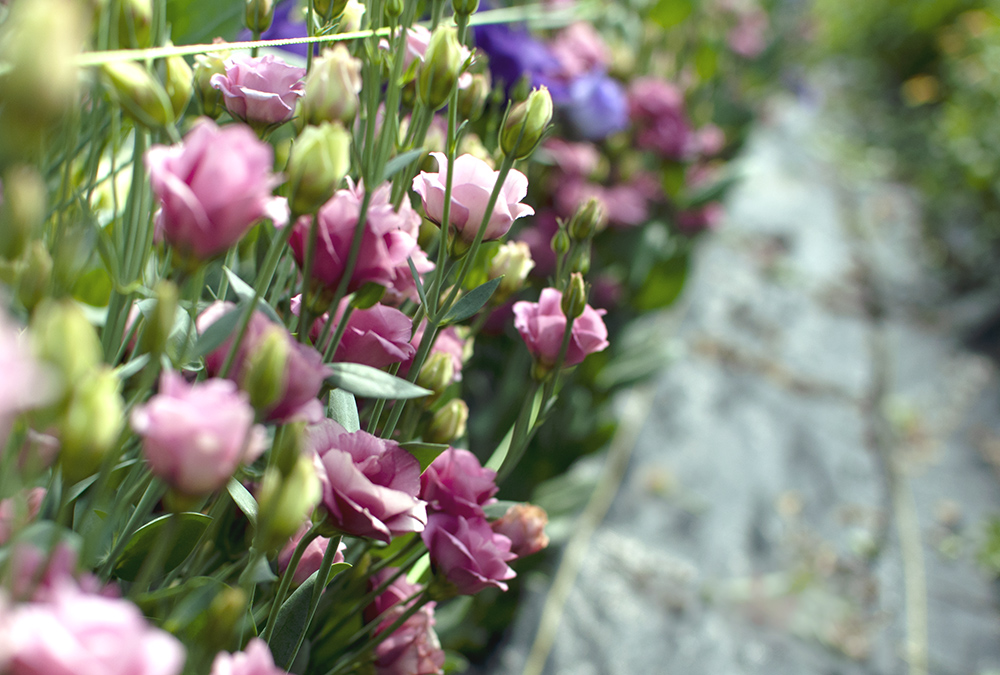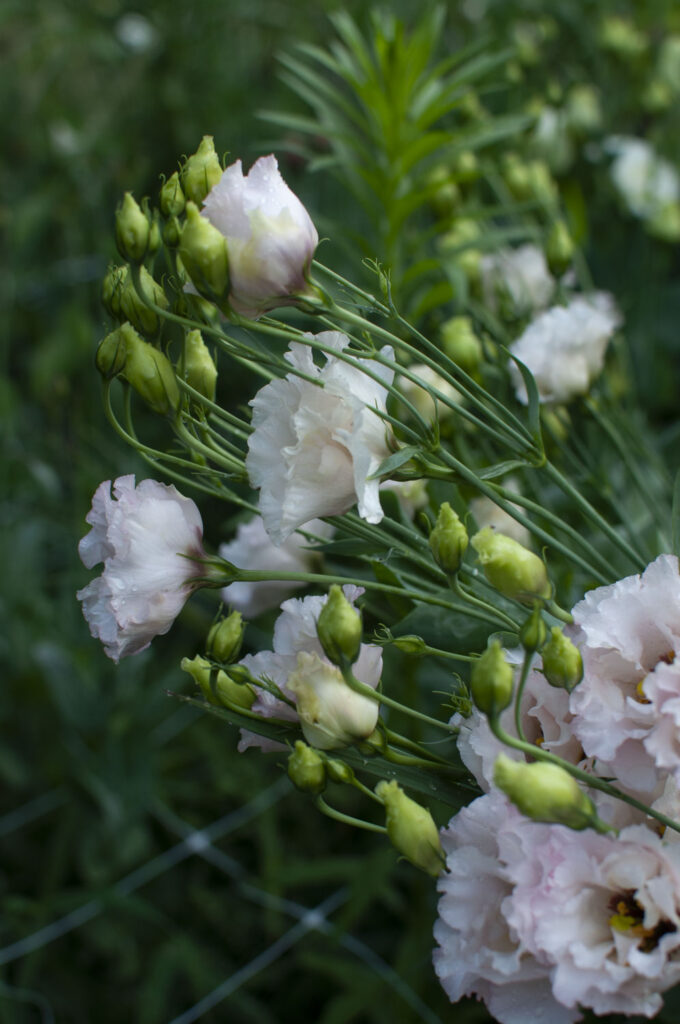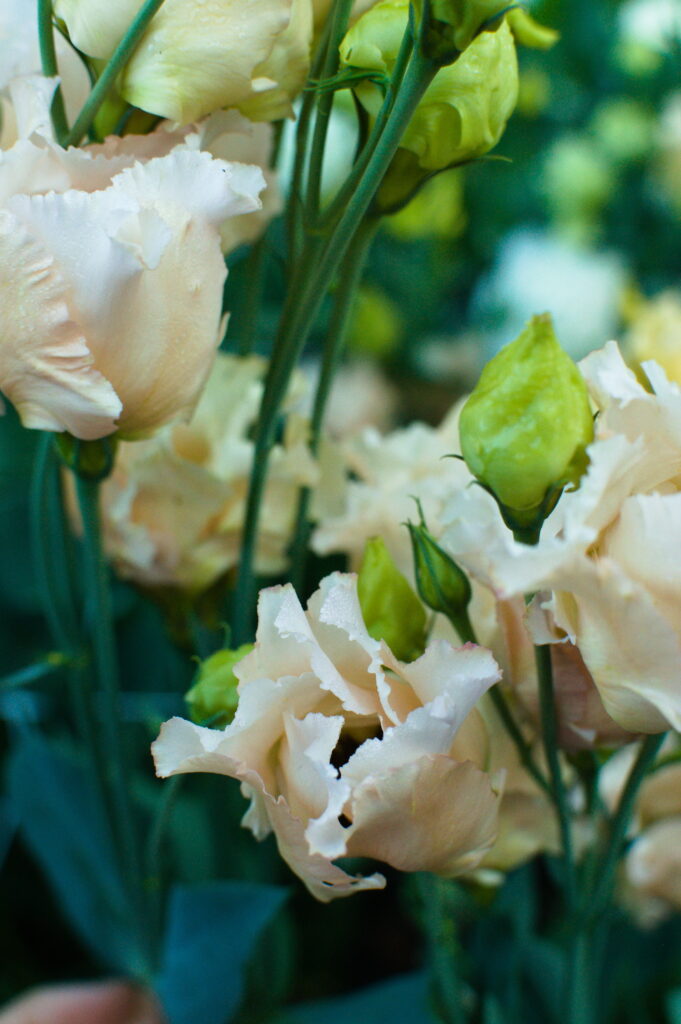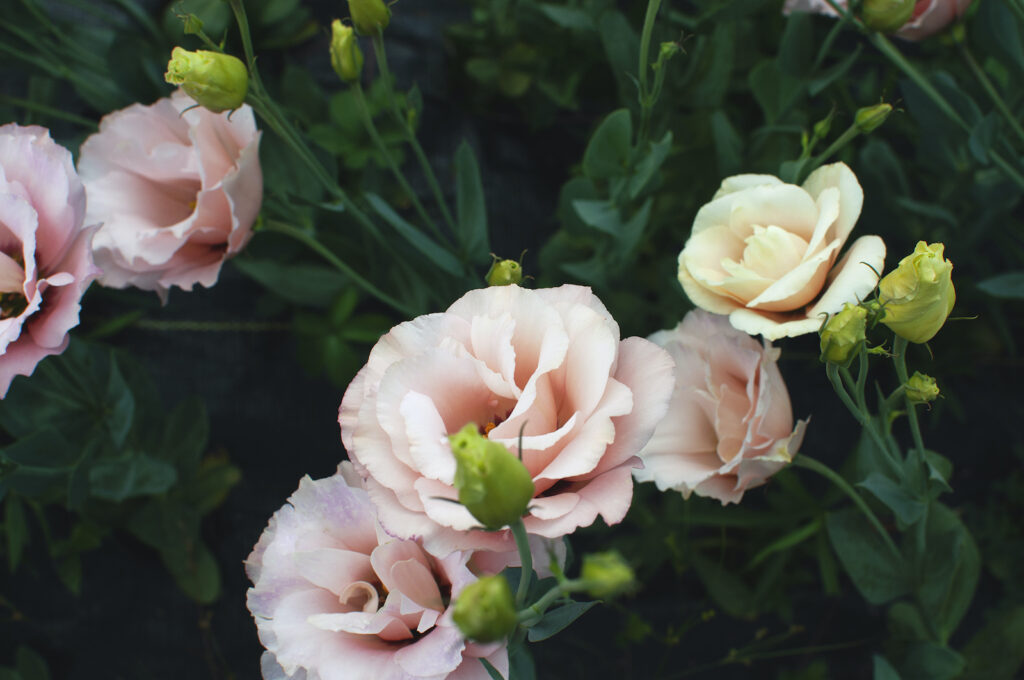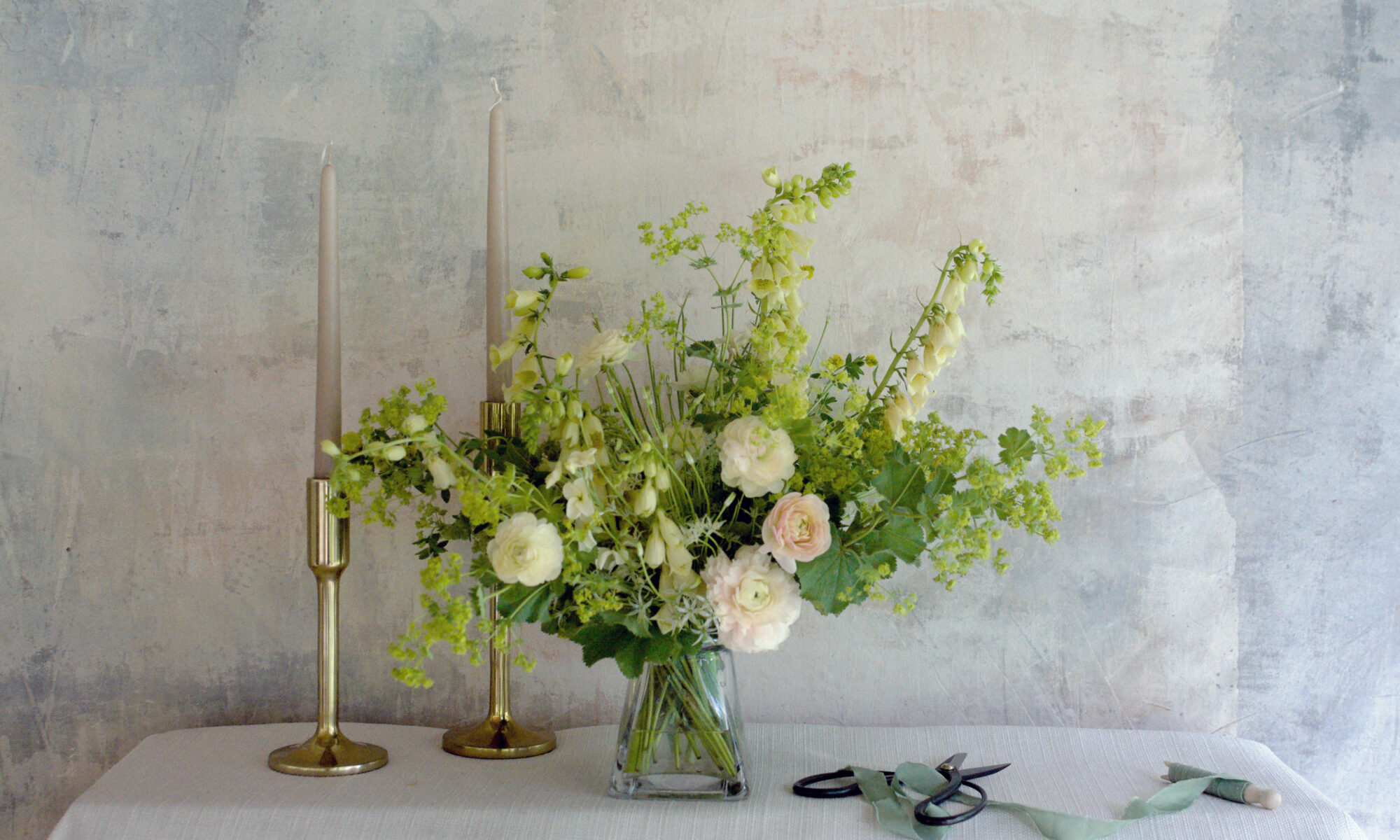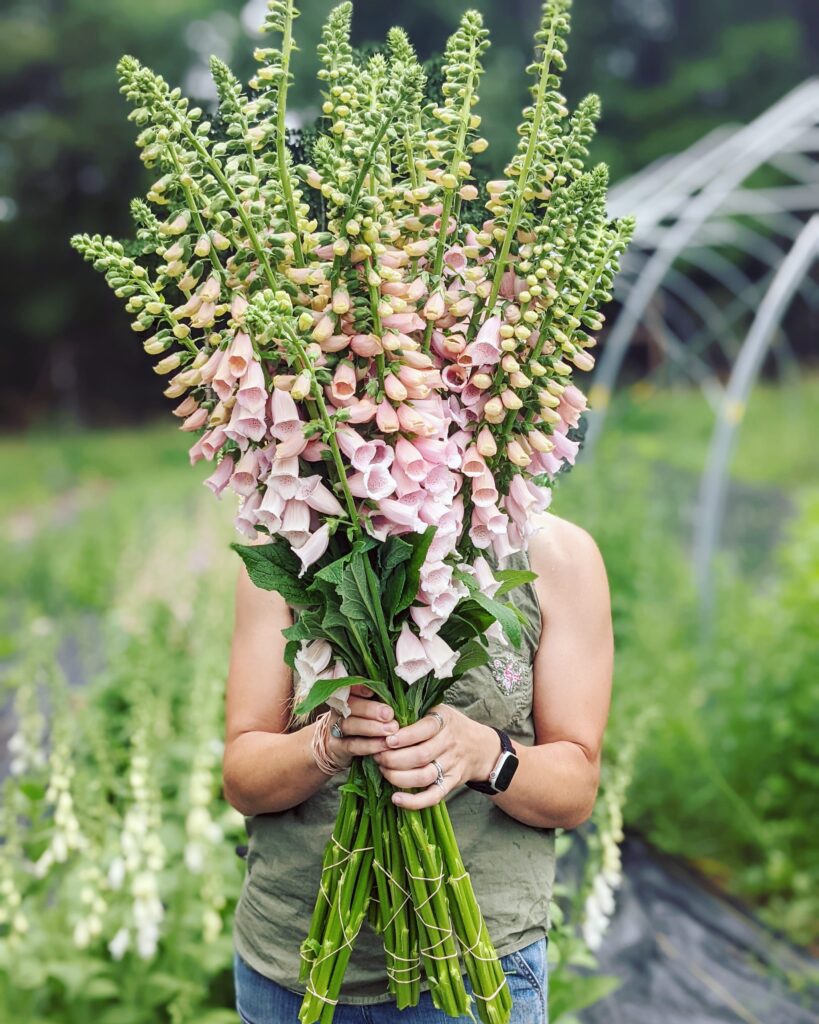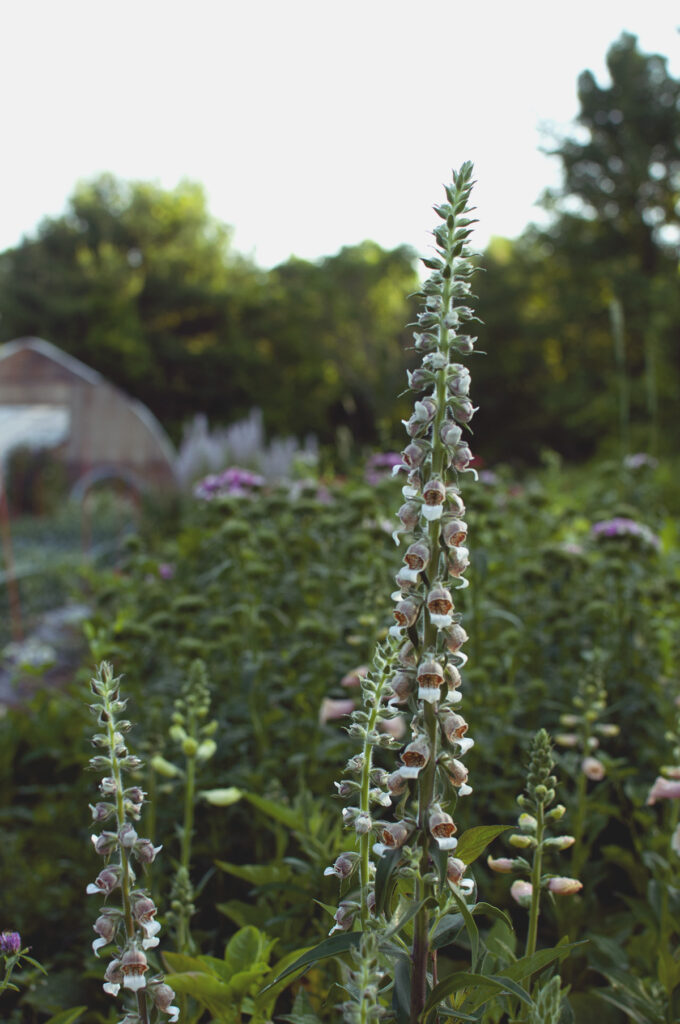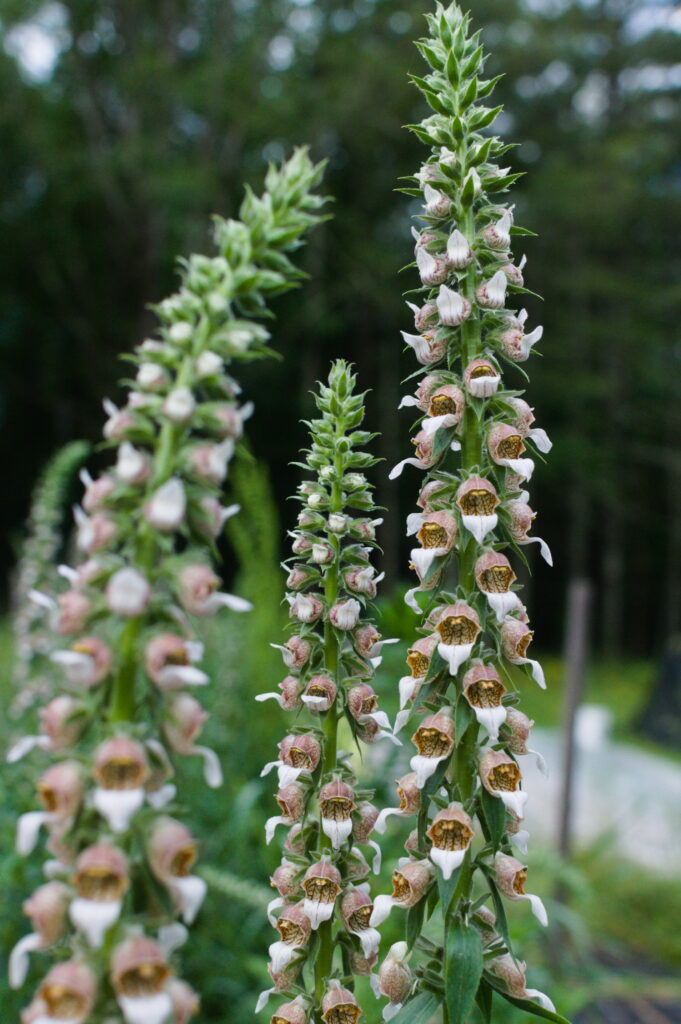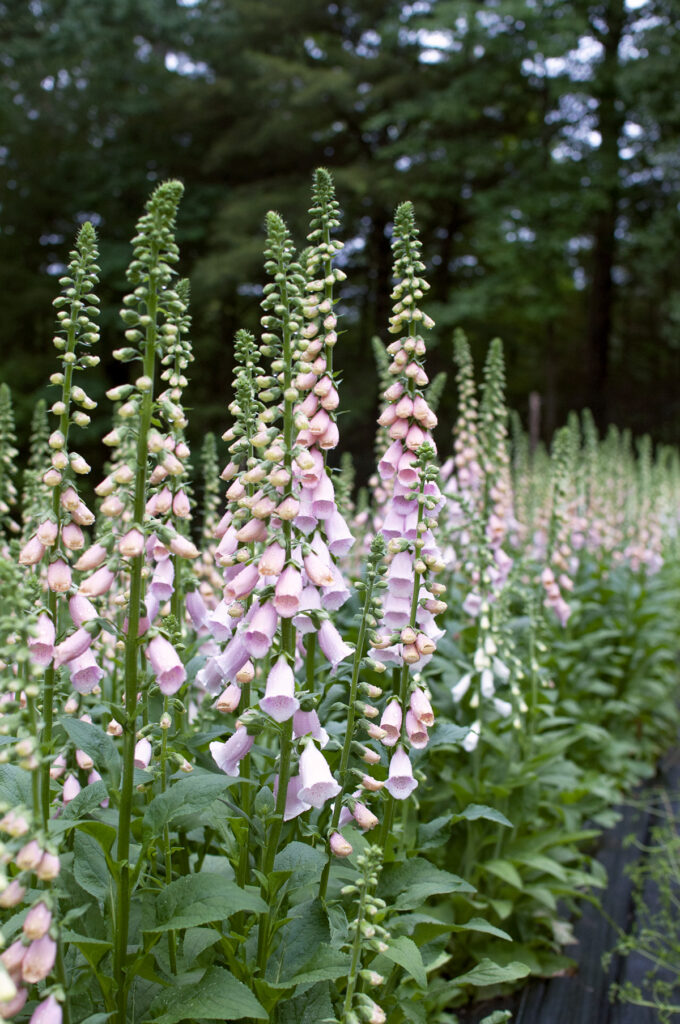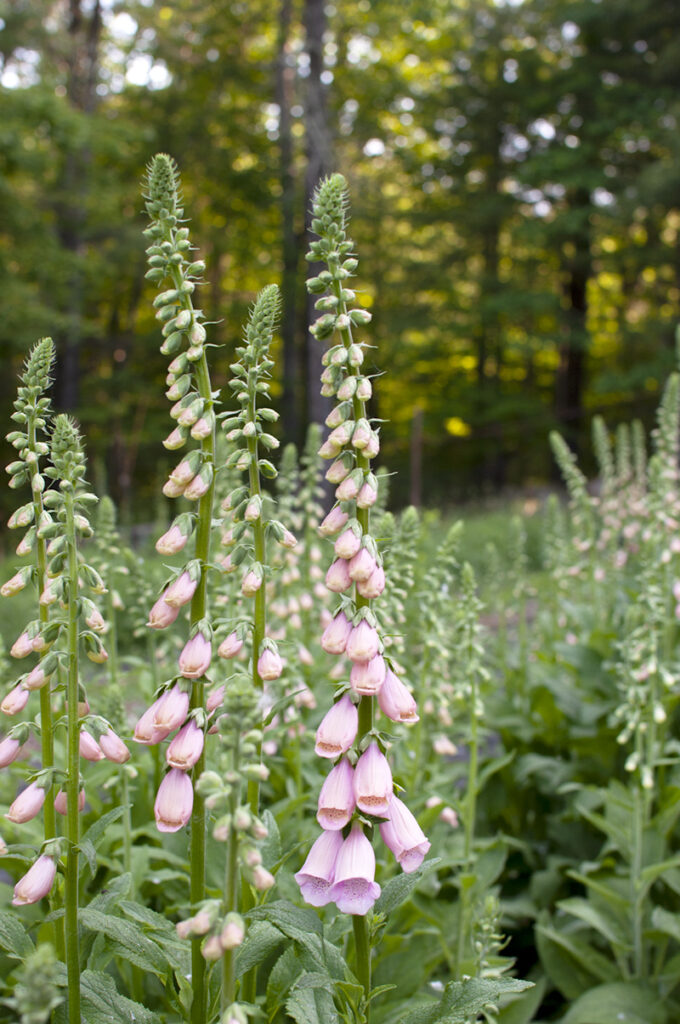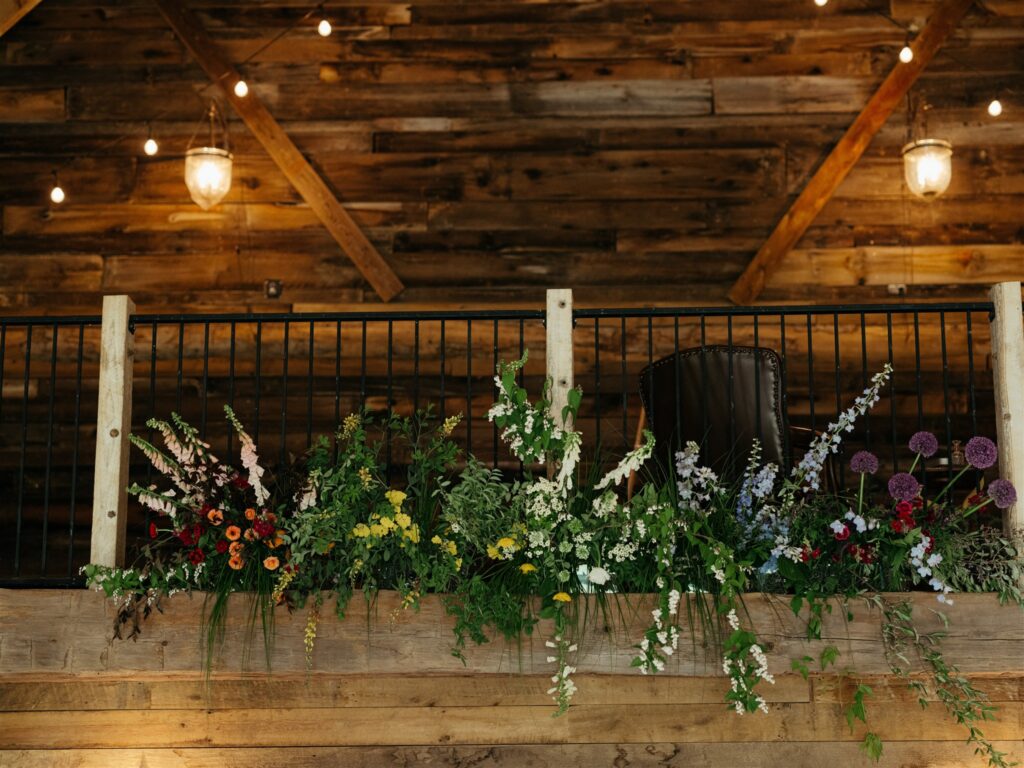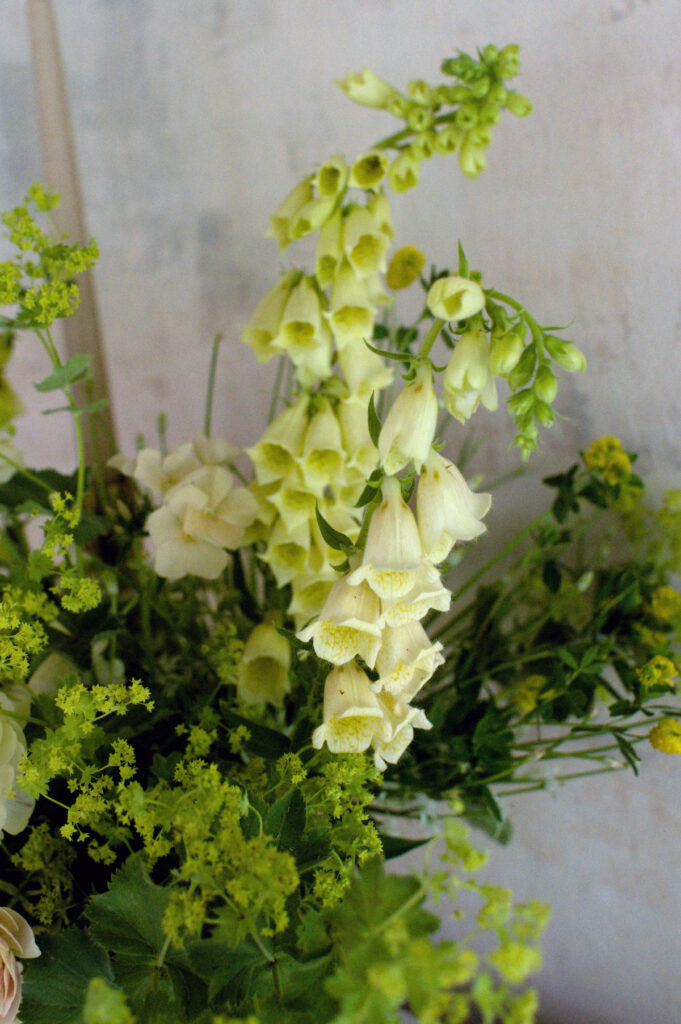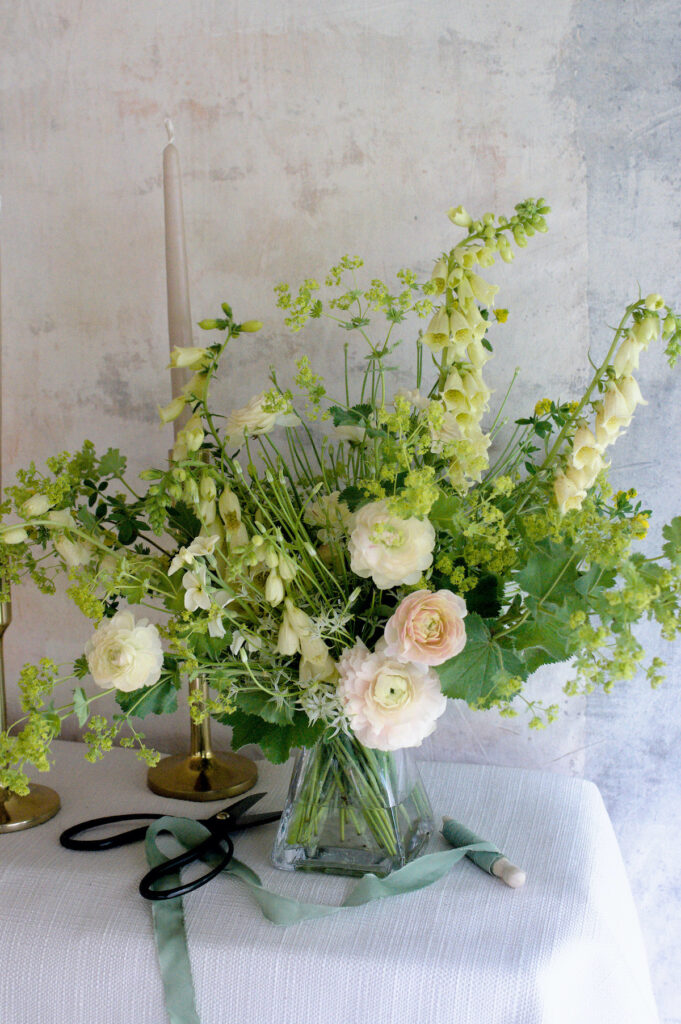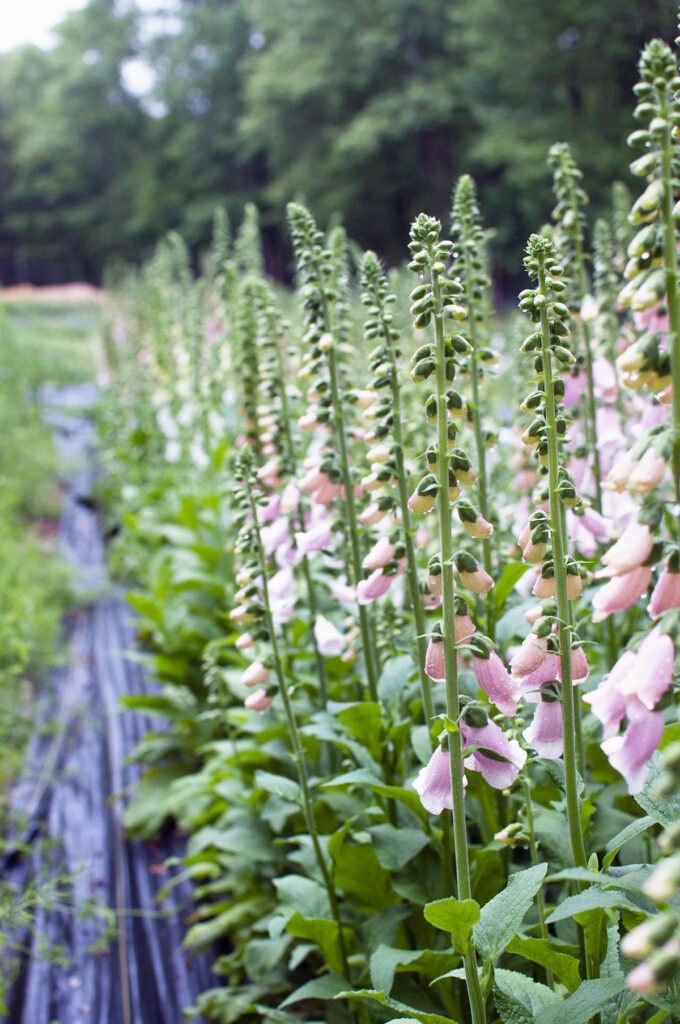Dahlia time is finally here! It’s the best time of year, really.
If you’re a farmer’s market shopper, you’ve probably noticed dahlias starting to sneak their way into your mixed bouquets over the last few weeks.
The dahlias have taken their sweet time maturing this season. It has a lot to do with the drought we’ve been in for months, and also a little to do with the fact that our new field still doesn’t have a working irrigation system. C’est la vie.
But now, behold! The dahlia, in all her glory.
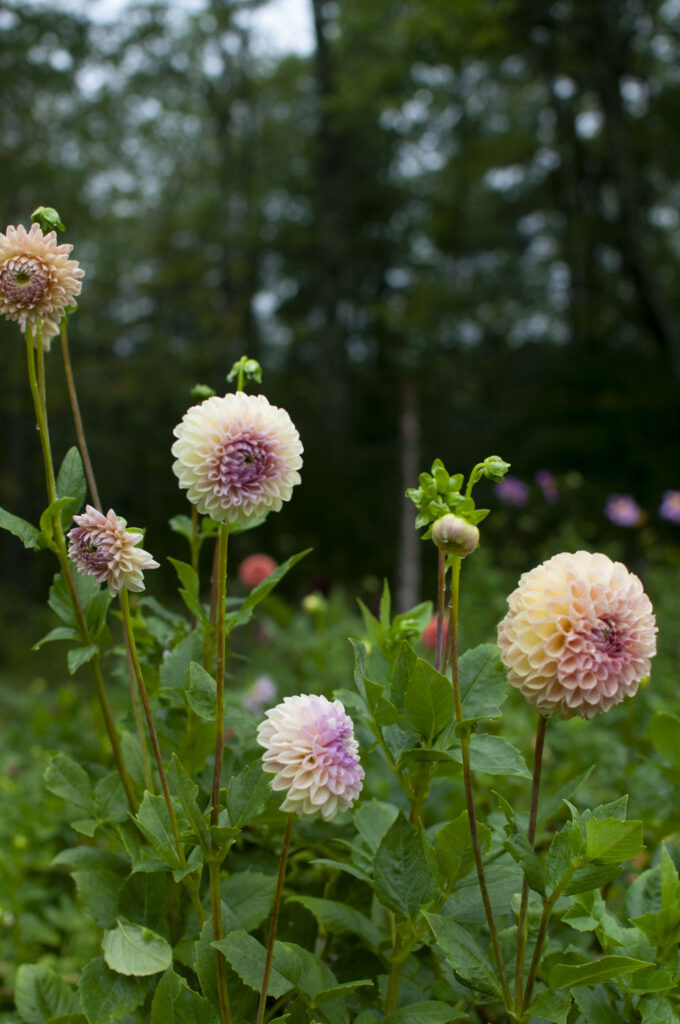
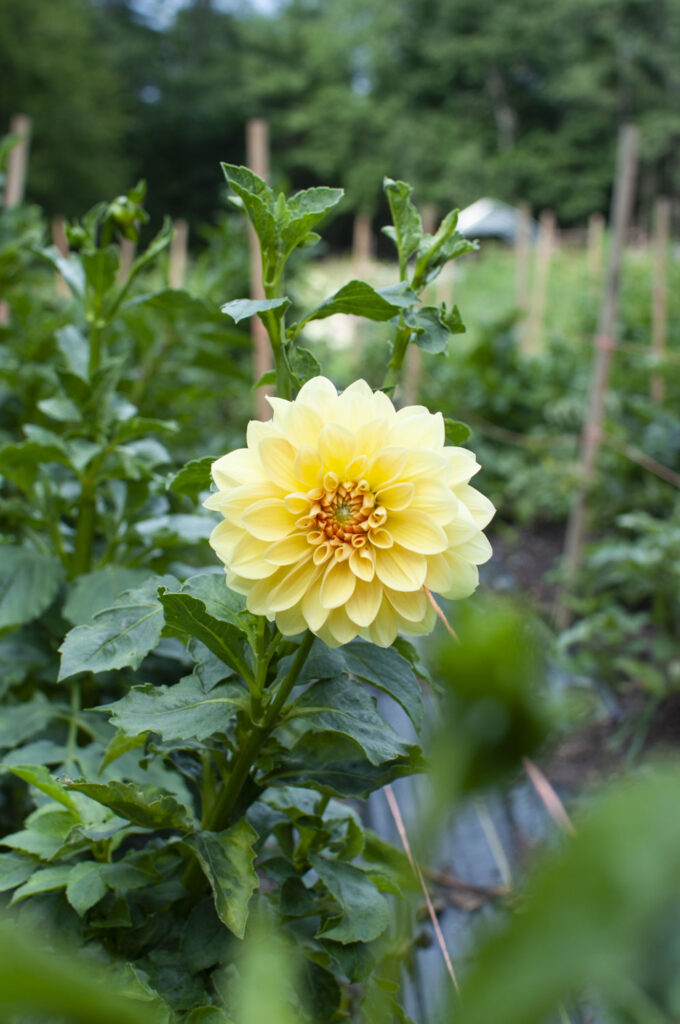
Dahlia Fever – Sea Change Farm and Flower
Dahlias are wonderful flowers that come in a variety of sizes, shapes, and colors. They also possess a remarkable ability to make people lose their $#!+, including me.
Dahlia fever. It’s a thing.
Evidence: we are growing over 100 distinct varieties of dahlias this year, because I cannot stop collecting new ones.
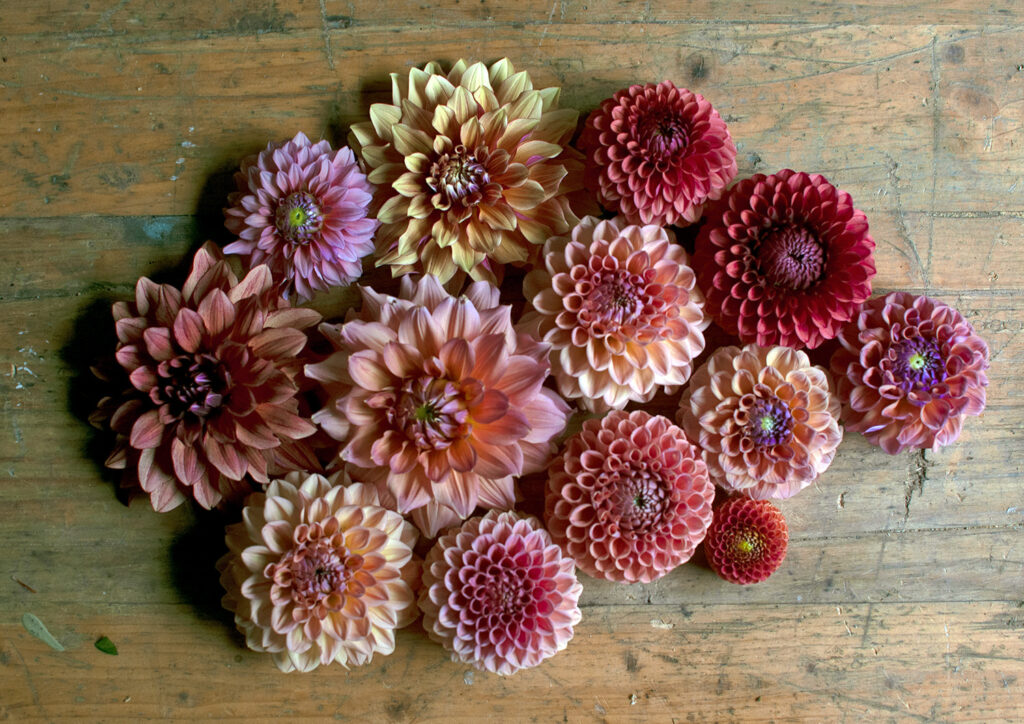
Dahlia Fever – Sea Change Farm and Flower
There are so many different families of dahlias! According to official fancy dahlia authorities, there are 14 different categories for dahlia bloom shapes.
We’re not that fancy, So I’ll tell you about the 4 categories we use when talking about dahlias.
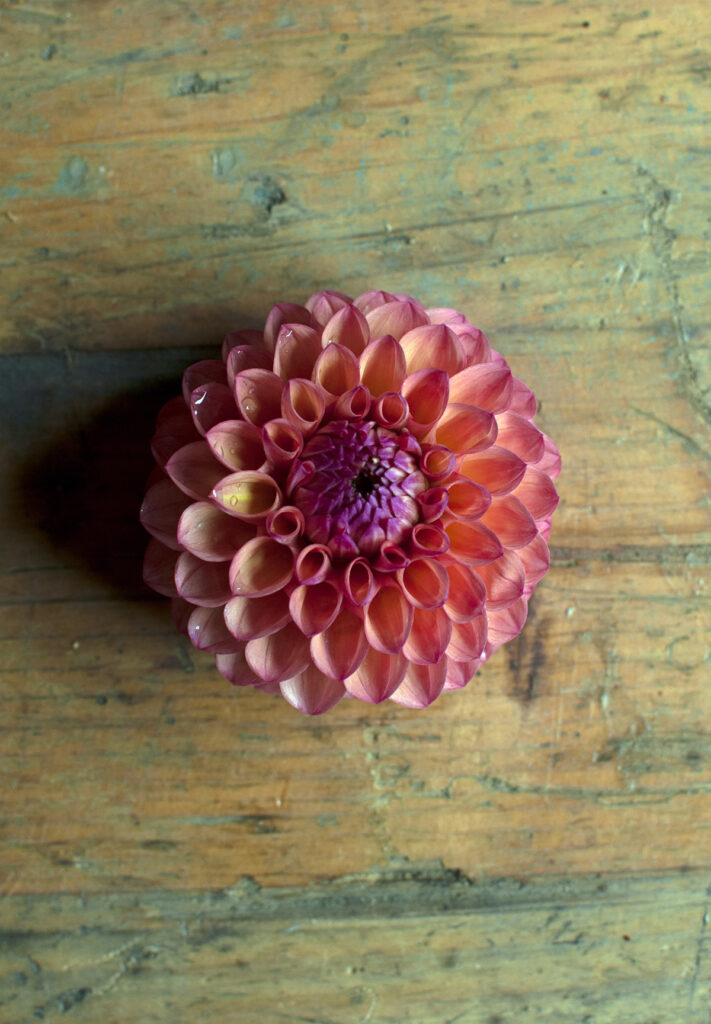
Ball Dahlias
First are the ball-shaped dahlias, which dazzle the beholder with their mesmerizing fractal petal patterns.
Ball-shaped dahlias are the sturdiest dahlias and generally have the longest vase life over any other dahlia shape, lasting a good 5-7 days (if you change the water)
Ball dahlias range in size from large 4ʺ balls down to adorable, itsy-bitsy 1ʺ pom poms.
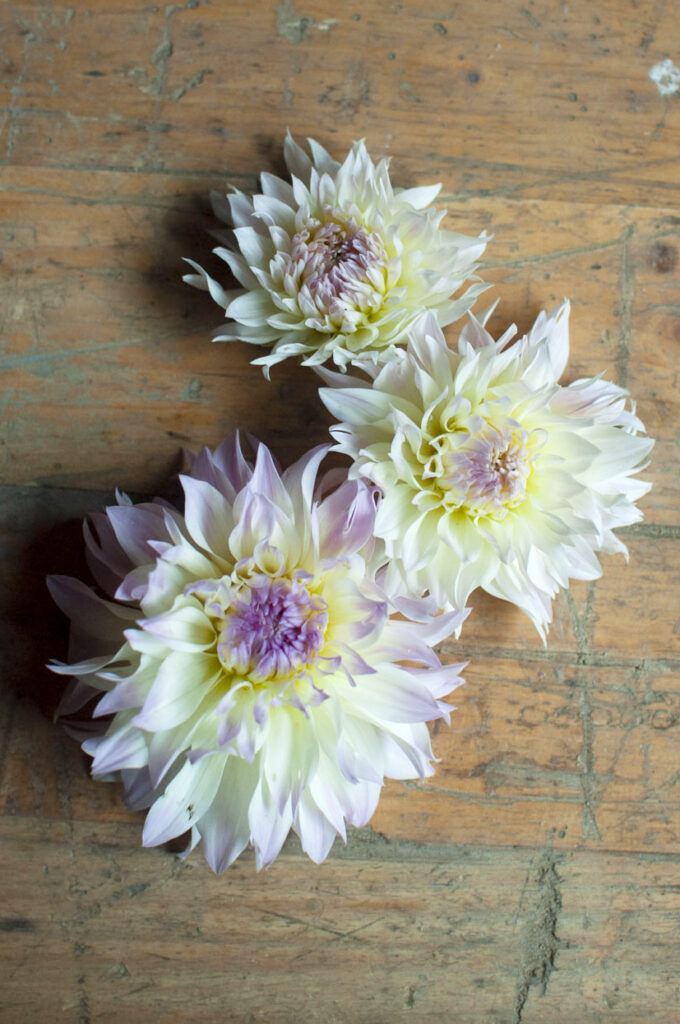
“Artsy” Dahlias
Next are the artsy dahlias, which have more specific groupings, but I’ll call them the “decoratives.”
These free-spirited dahlias have romantic wavy or curving petals, and some open to a waterlily type shape.
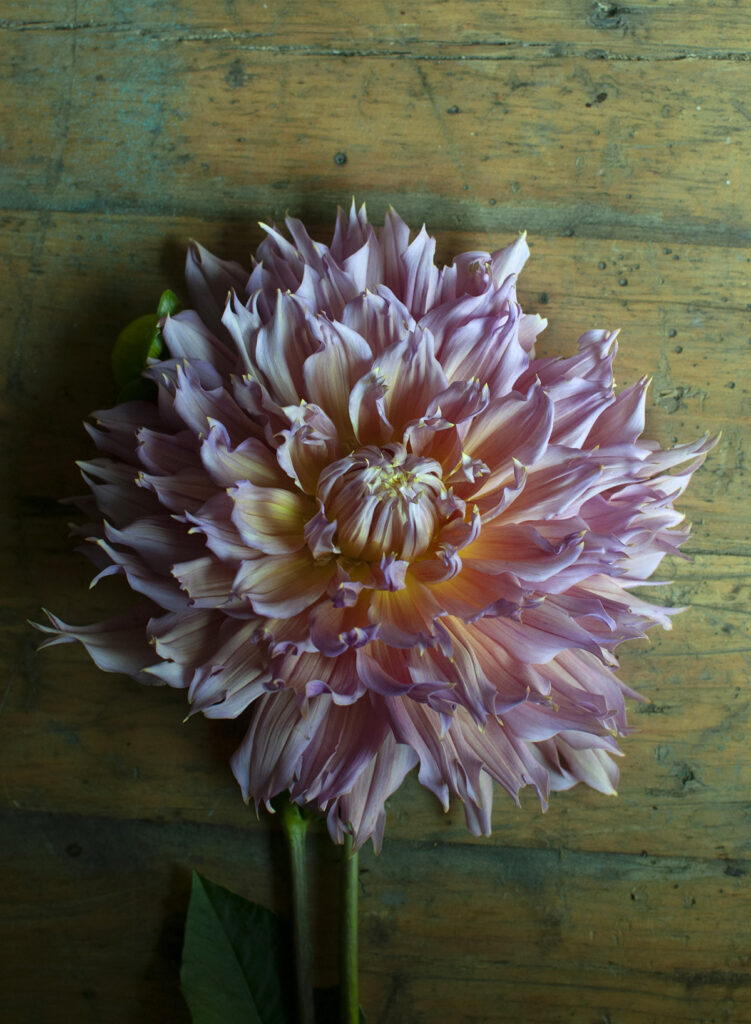
Dinnerplate Dahlias
Most impressive are the show-stopping dinnerplate dahlias.
Dinnerplate dahlias feature oversized blooms the size of a toddler’s head, sometimes bigger! Depends on the toddler.
Dinnerplate dahlias have the shortest vase life of all the dahlias we grow. I like to say these dahlias are like fireworks: brief but so beautiful!
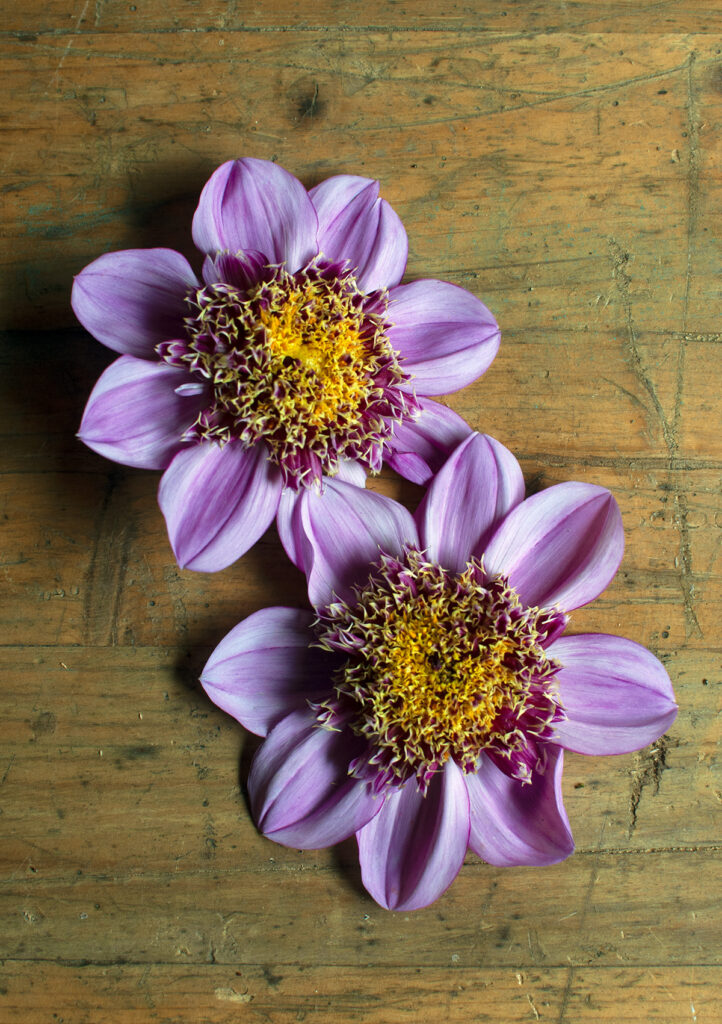
Oddball Dahlias
Last, but not least, are the single-flowered and anemone-flowered dahlias.
These dahlias are joyful-looking, and the fluffy ones are downright adorable. They make for very special accent flowers in a bouquet, and the bees love them!
Dahlias grow from sweet-potato-like tubers.
Here in New York, we have to dig up our dahlia tubers each fall and store them safely in a non-freezing place for the winter.
To spruce up your own garden, we’ll have dahlia tubers for sale this winter and next spring. I’m hoping we’ll be able to offer many more varieties than last year, including most if not all of the varieties pictured here.
Dahlias! We love them!
I wish I could show you around our dahlia patch now that they are starting to really show off. Heres a little virtual tour.
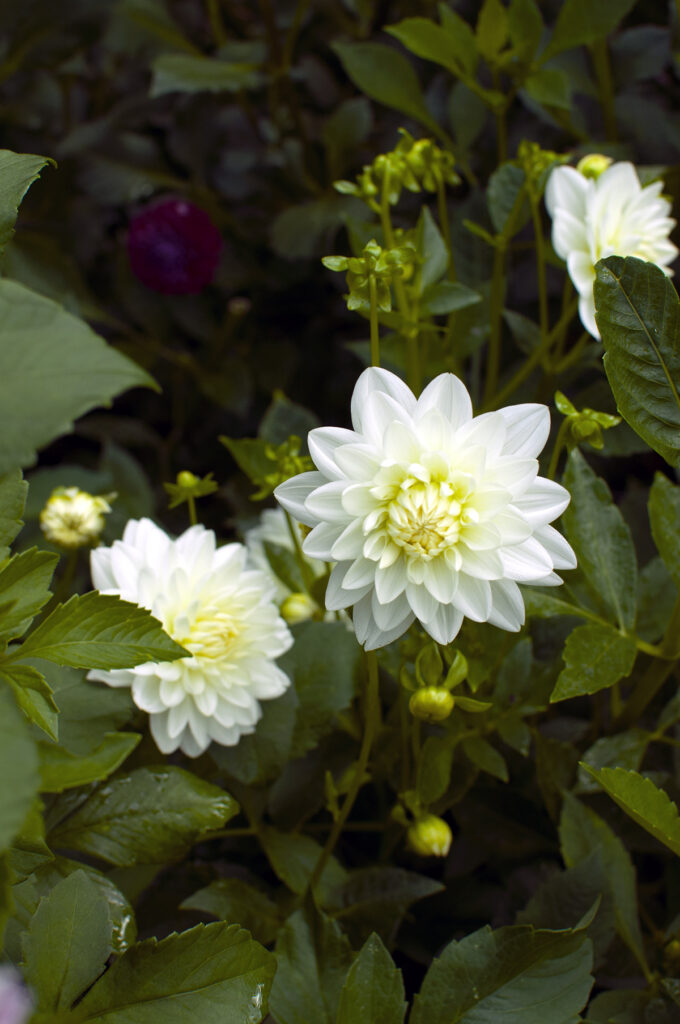
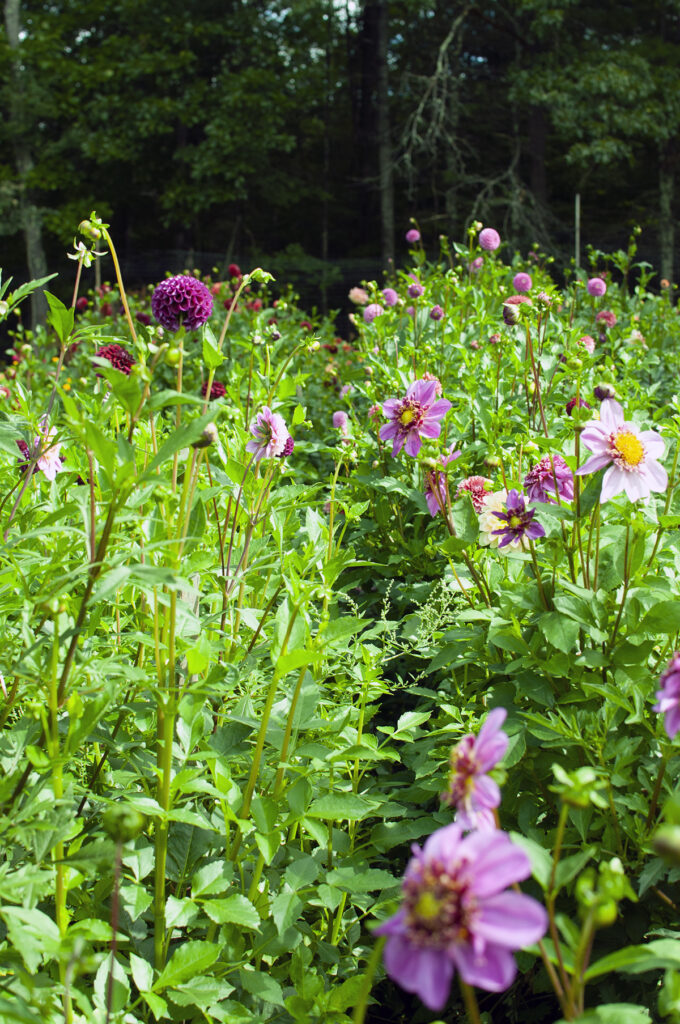
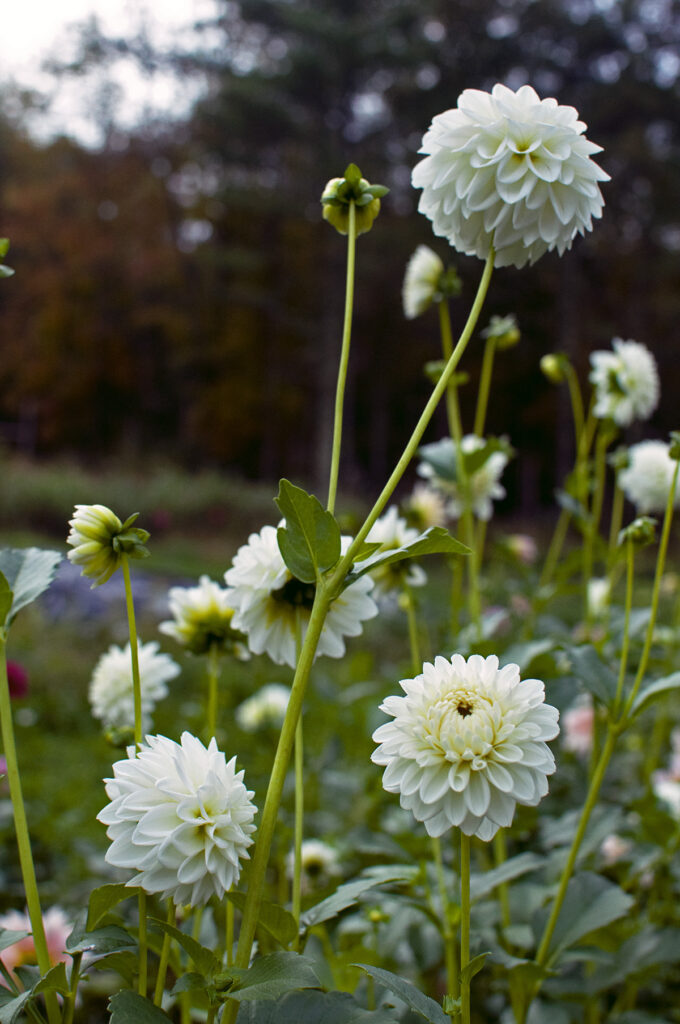
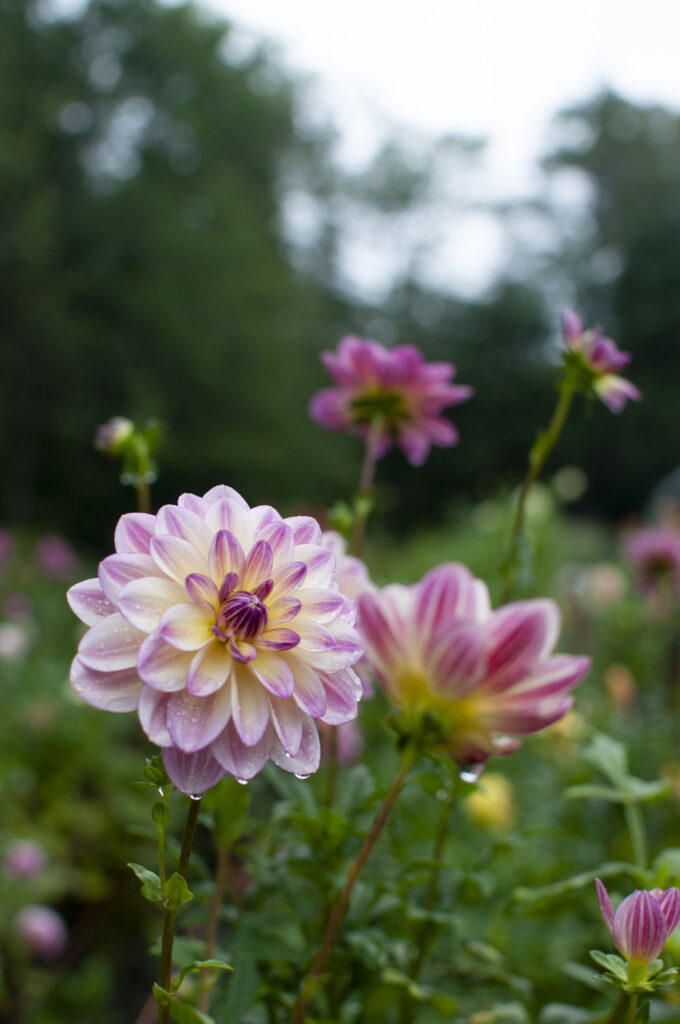
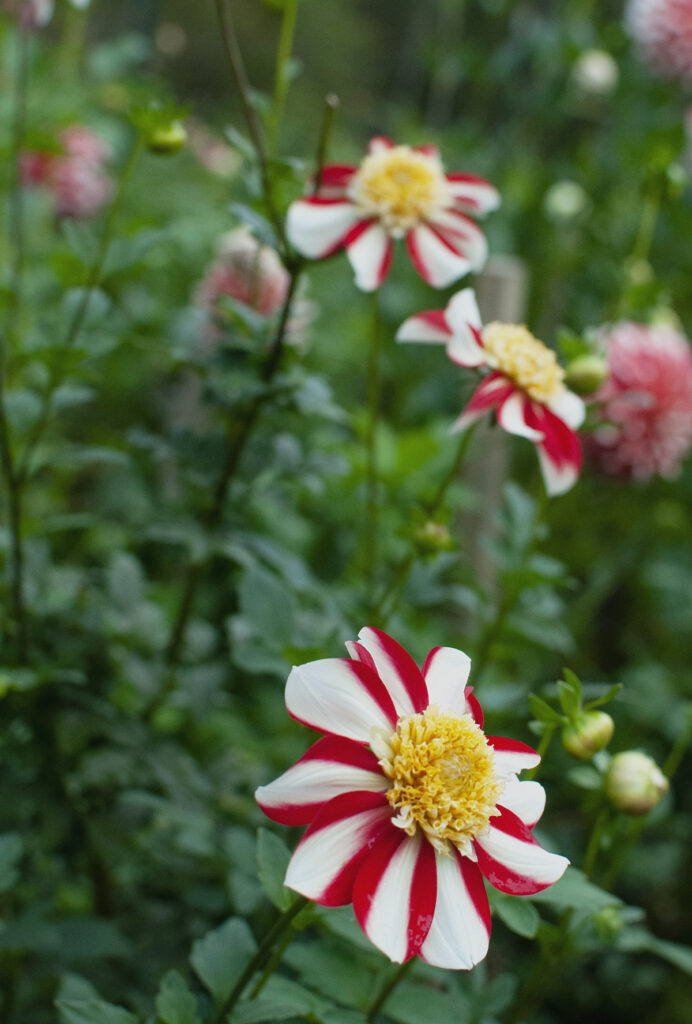
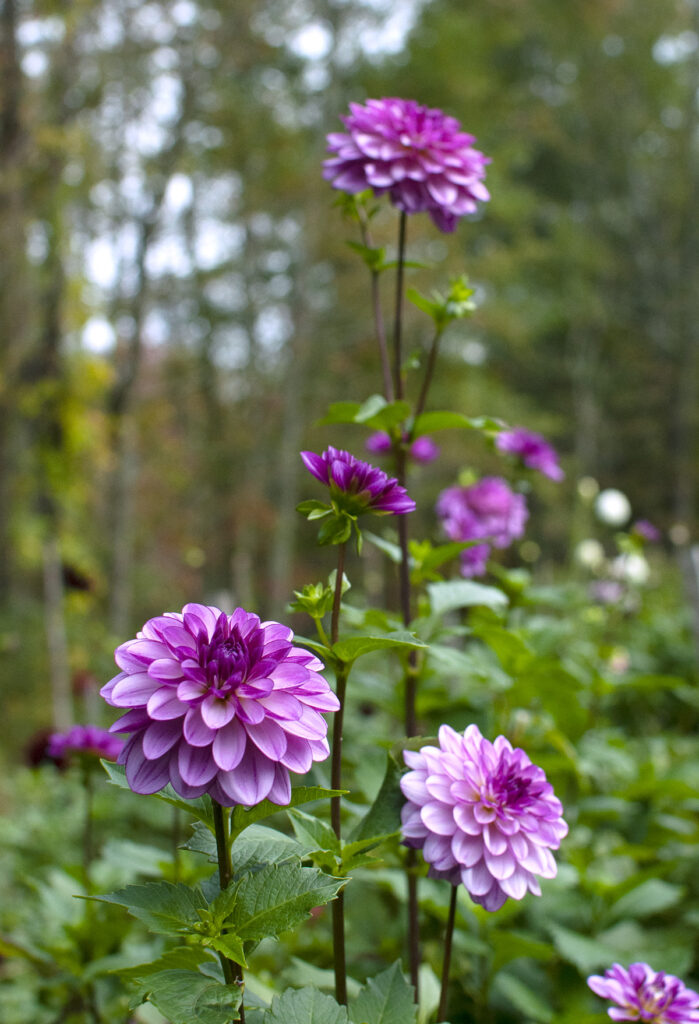
Are you also a dahlia fanatic, like me? Do you have a favorite variety? Let me know!
This is an excerpt from the Sea Change Farm & Flower newsletter–sign up here.
